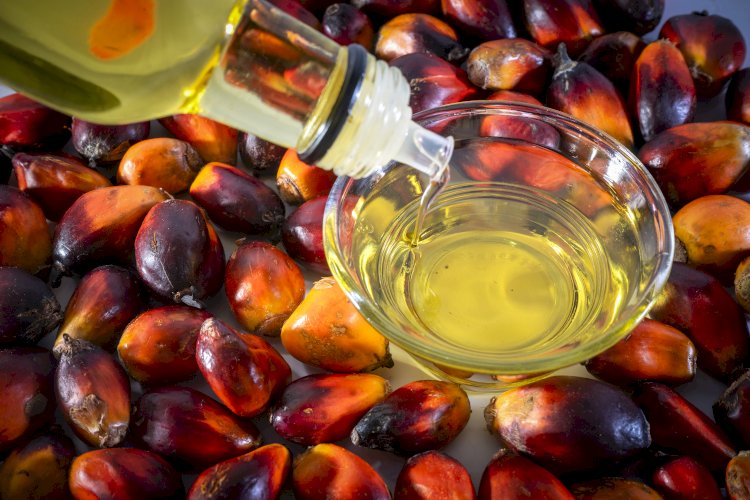Palm oil price trends – The effect of extreme weather

On June 8, the National Oceanic and Atmospheric Administration (NOAA) announced the official transition from La Niña to El Niño, indicating warmer than average sea surface temperatures (SSTs) in the equatorial Pacific Ocean.
This change in climate patterns holds significant implications for agricultural regions across the globe and its effects will vary from region to region.
In Southeast Asia, particularly in Malaysia and Indonesia, El Niño can seriously damage agriculture, as the warming of Pacific waters disrupts rainfall frequency, leading to severe drought conditions.
NOAA’s expectations of a moderate-to-strong El Niño will put the market’s attention on the region’s weather, especially during late fall-early winter, when conditions are most critical.
The first four months of 2023 have been challenging for palm oil yields in Malaysia. Below-average production levels and the lowest output recorded in April since 2006 have sustained prices above 3,800 ringgit per tonne, at least in the first quarter of the calendar year.
Palm oil futures moved lower in the broader commodity sell-off during the second half of March, with rising production levels contributing to the weakness and eventually pushing the most actively traded contract as low as 3,200 ringgit.
May was a positve month for palm oil production for the country, with the most robust month-over-month growth since March 2020. The surge in production helped build inventories and raised expectations for an increase in the stocks-to-use ratio, which had dropped below the five-year average.
Yet, a climate event such as El Niño could reduce yields and production in the coming year.
While production in May was 321,000 tonnes above April and this would normally signal a growth in stocks through the end of the marketing year, the seasonal transition to El Niño could stop the upward trend and again reduce production and inventories.
Typically, it takes about six months for changes in weather patterns to impact palm oil production. So, in balance, the 2022-23 season may not suffer the usual decline associated with the drier outlook implied by El Niño. However, 2023-24 yields could decline, potentially reducing the final output.
During the 2015-16 El Niño, the marketing-year average yield dropped from a high of 20.53 percent in 2013-14 to below 20 percent by 2016-17. The level to which it dropped was the lowest since 2003-04, when the yield coincided the end of a period of several years of warmer-than-normal SSTs in the eastern equatorial Pacific Ocean.
In the first months of 2023, Malaysia accumulated almost twice the average cumulative precipitation, providing some soil moisture reserves that might help the palm trees endure the initial decline in rainfall.
However, average yields have fallen from a high of 20.16 percent in 2018-19 to a predicted average of 19.83 percent in 2022-23. A further reduction during 2023-24 could push the average output below Fastmarkets’ current prediction of 19.71. percent.
Data from the Malaysian Palm Oil Board (MPOB) implied that the number of fresh palm fruit bunches harvested dropped from a record 103,200 bunches in 2018-19 to just 89,500 during the pandemic in 2020-21 before rebounding slightly in 2021-22 to 91,400.
Based on its yield prediction, plantations would need to harvest 97,600 fresh fruit bunches during this marketing year to meet Fastmarkets’ current 2023-23 Malaysian palm oil production forecast of 19.25 million tonnes. However, given the challenges Malaysian plantations have faced in sourcing labor since the pandemic, Fastmarkets’ production outlook may turn out to be too optimistic.
If production and stocks fall below Fastmarkets’ expectations, the spread between soybean oil and palm oil could narrow to a new level.
From December to mid-May, the spread between Fastmarkets’ assessment of RBD soybean oil prices in central Illinois and RBD palm oil at the Gulf has been narrowing from its record level peak (above 50 cents per pound in June 2021). The spread had narrowed to a ten-cent premium for palm oil in March 2022 but widened to more than 42 cents in October before starting to narrow again to a low of slightly less than eight cents at the end of April.
Since then, the spread has widened to almost 30 cents and concerns about drier-than-normal conditions could push it out further in the coming weeks.
Still, if expectations for 2023-24 Malaysian palm oil stocks and production decline in the coming months, the spread could return to a premium for palm oil during 2023-24.
The announcement of El Niño and its subsequent impacts on the palm oil market has shed light on the critical interplay between climate patterns and agricultural sectors. El Niño can significantly disrupt palm oil production, particularly in Southeast Asia.
Malaysia has already faced challenges in the current season, with below-average production levels and fluctuating prices. While soil moisture reserves may mitigate the immediate impact of El Niño, the overall 2023-24 production could decline well below Fastmarkets’ prediction. Traders will remain fixated on the region’s weather conditions, especially in the late fall-early winter when drought conditions typically intensify. In that scenario, it is crucial for market players to closely monitor the progression of weather patterns and employ adaptive strategies to ensure the resilience of the sector and mitigate its risks.
As the world seeks to reduce dependence on fossil fuels and transition towards renewable energy sources, the global demand for biofuel feedstocks continues to increase. With its high oil yield and versatile applications, palm oil can be an essential feedstock for biofuel production and offer an alternative to fossil fuels.
Read also
Wheat in Southern Brazil Impacted by Dry Weather and Frosts
Oilseed Industry. Leaders and Strategies in the Times of a Great Change
Black Sea & Danube Region: Oilseed and Vegoil Markets Within Ongoing Transfor...
Serbia. The drought will cause extremely high losses for farmers this year
2023/24 Safrinha Corn in Brazil 91% Harvested
Write to us
Our manager will contact you soon



